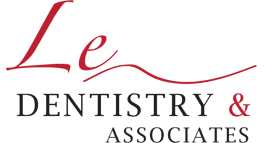Oral health and hygiene issues affect many adults in the United States. The CDC estimates that as many as 25% of people are currently living with oral hygiene issues. And, a lot of that probably comes down to flossing, perhaps the most commonly neglected part of oral care.
Not everyone flosses regularly or uses the right technique to floss. Too many people procrastinate flossing or avoid it altogether. But, with the right oral health care and hygiene, including regular flossing, you can avoid preventable dental issues like tooth decay, cavities, or tooth loss. Isn’t it worth taking the time to learn how to floss correctly?
At Le Dentistry & Associates of Norcross, Georgia, our team of expert dentistry providers are here to offer expert guidance on flossing and other aspects of oral hygiene. Flossing, put simply, is as important as brushing your teeth! Here’s what we want our patients to understand about flossing, from reasons why you should floss, to the right technique and timing.
The importance of flossing
Flossing is necessary to get in between your teeth, where tight corners can make it difficult or even impossible for your toothbrush to remove all trapped particles of food and debris. If you can’t clear away these particles, they can become trapped at or below your gum line and turn into solid deposits of plaque, leading to tooth decay and damage.
When you prevent plaque, you also prevent cavities, gingivitis, and halitosis, or bad breath. You also protect your heart, as oral decay can send harmful bacteria into your bloodstream. That means that flossing can save your life, in addition to keeping your gums and teeth clean and healthy.
Correct flossing technique and timing
To floss your teeth, you use a thin strip of material, typically plastic, woven in layers that strengthen and reinforce each strand. Finding the right dental floss for you can make this part of your dental hygiene routine that much easier!
Select a piece of floss that is about 18 inches in length. Working from one end of the piece of floss to the other, use a 1-inch strip held taut between two fingers to clean each tooth in your mouth.
Carefully slide the floss between your teeth, using a C-shaped motion to guide the strip around each tooth. Make sure to get down beneath the gum line to capture particles that you can’t see, but still need to clear away.
You should floss and brush at least twice each day. You can also floss after eating, especially if you notice discomfort from potentially trapped food in between your teeth. Floss before brushing, so you aren’t moving just bacteria around in your newly cleaned mouth.
It is worth taking the extra time before bedtime, in the morning, and any other time you feel like it to fully floss your teeth.
To learn more about the importance of flossing and for expert guidance on the correct flossing technique, contact the team at Le Dentistry & Associates. Give us a call today to schedule your appointment, or request an appointment online now.
